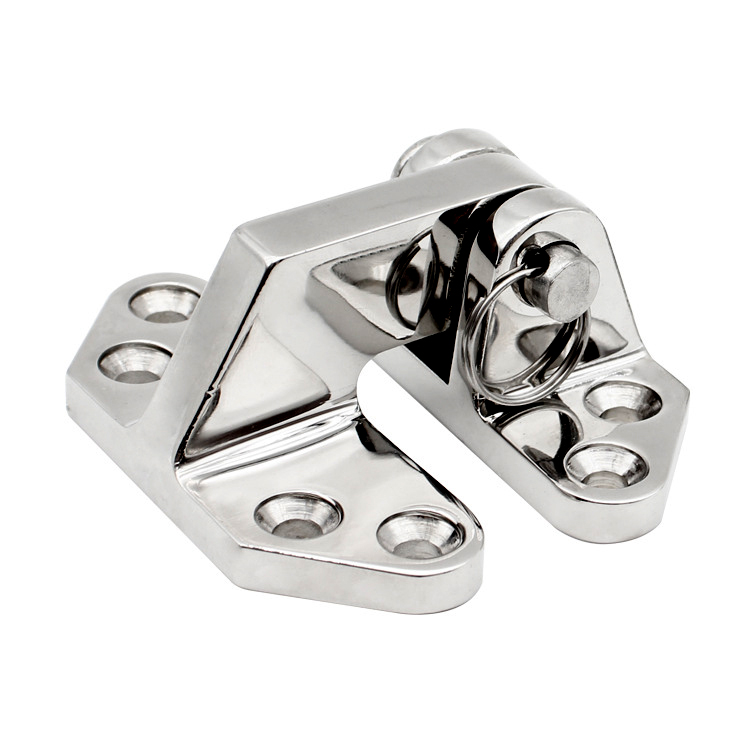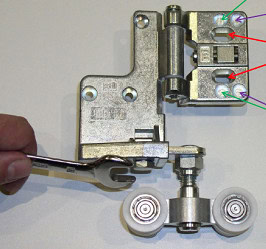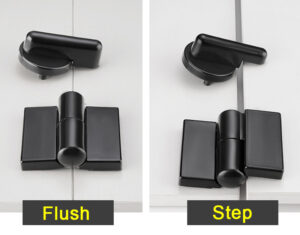In the realm of industrial applications, the choice of materials plays a critical role in ensuring durability, reliability, and resistance to corrosion. One such material that stands out is 316 stainless steel. In this article, we will delve into the world of 316 stainless steel hinges, exploring their characteristics, advantages, applications, and key differences from traditional stainless steel hinges. Whether you are in the marine, chemical, or food processing industry, understanding the benefits of the hinges will help you make informed decisions for your industrial needs.

What are 316 Stainless Steel Hinges?
316 stainless steel hinges are hinges made from a specific type of stainless steel alloy known as grade 316. This alloy contains higher amounts of chromium, nickel, and molybdenum compared to standard stainless steel. The presence of these elements enhances the corrosion resistance, strength, and overall performance of the hinges, especially in harsh and corrosive environments. The marine hatch hinges are a type of industrial hinge made of 316. These hinges are required for use in marine environments. If other materials were used, they would not be able to do the job.
What are the advantages of 316 Stainless Steel Hinges?
The hinges offer a plethora of advantages for industrial applications. Firstly, their exceptional corrosion resistance properties make them highly suitable for environments exposed to corrosive substances such as saltwater, chemicals, and acids. This corrosion resistance ensures longevity and reduces the need for frequent replacements or maintenance.
Additionally, 316 stainless steel hinges exhibit superior strength and durability, allowing them to withstand heavy loads and frequent use. They are highly resistant to wear, deformation, and damage, making them reliable choices for applications where strength and reliability are paramount. Moreover, these hinges retain their strength and performance even at elevated temperatures, further expanding their range of applications.
Where are 316 Stainless Steel Hinges mainly used?
These hinges find widespread use in industries where corrosion resistance is critical. Such as marine, offshore, chemical processing, and food processing. In marine environments, these hinges are extensively employed for boat fittings, yacht hardware. And other applications exposed to saltwater and high humidity. The chemical processing industry relies on hinges for equipment and machinery that handle corrosive chemicals. Similarly, in the food processing industry, where hygiene and cleanliness are vital. These hinges are preferred due to their resistance to staining and bacterial growth.
Differences from traditional stainless steel hinges
Compared to traditional stainless steel hinges, 316 stainless steel hinges offer superior corrosion resistance, particularly in aggressive environments. The higher content of chromium, nickel, and molybdenum in grade 316 enhances its ability to resist pitting, crevice corrosion, and chloride-induced corrosion, which are common challenges faced by traditional stainless steel hinges.
Furthermore, 316 stainless steel hinges exhibit better resistance to high temperatures and thermal cycling, making them suitable for applications subjected to temperature variations. This resistance minimizes the risk of thermal expansion, distortion, or loss of mechanical properties, ensuring the hinges’ long-term performance.
How can I be sure that it is a 316 Stainless Steel Hinge?
To ensure that you are acquiring genuine 316 stainless steel hinges, there are a few key indicators to look for. Firstly, check for appropriate certifications or standards compliance. Such as ASTM A276 or ASTM A193, which confirm the material’s quality and composition. Additionally, reputable manufacturers will provide documentation, such as material test reports, to validate the grade and composition of the hinges.
Inspecting the surface finish is also important. 316 stainless steel hinges typically have a smooth and uniform finish, free from blemishes or discoloration. The hinges should exhibit excellent resistance to rust, tarnish, or corrosion when exposed to corrosive environments.
Conclusion
316 stainless steel hinges offer unparalleled strength, corrosion resistance, and durability, making them indispensable in industrial applications. With their exceptional properties, these hinges ensure reliable performance in
harsh environments, such as marine, chemical, and food processing industries. Understanding the advantages, applications, and differences of the hinges will empower you to make informed decisions. And select the appropriate hinges for your specific industrial needs.







